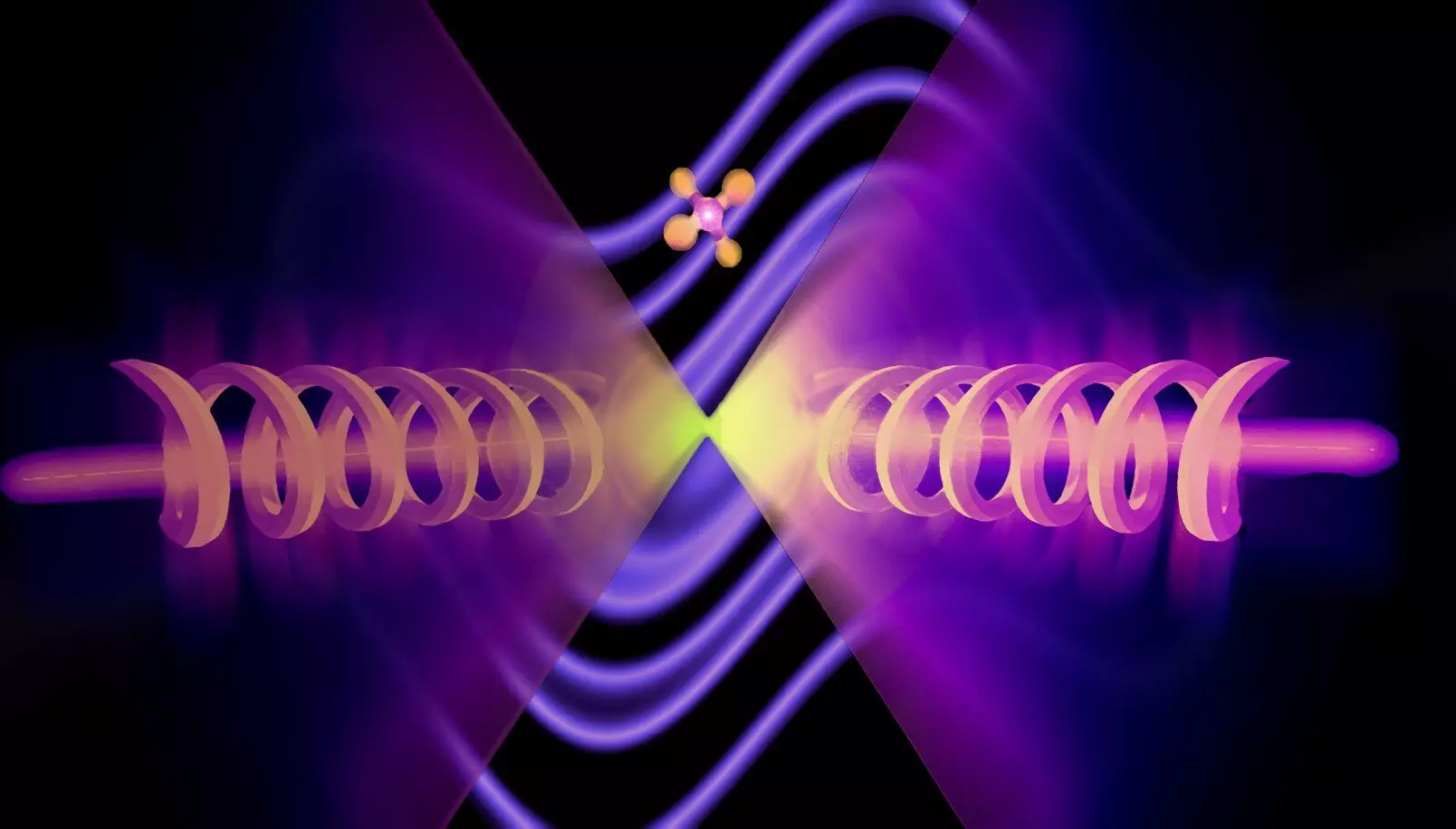Researchers at the University of Warsaw’s Faculty of Physics have made an intriguing discovery in the field of quantum mechanics and optics. By superposing two light beams twisted in the clockwise direction, they have successfully created counterclockwise twists in the dark regions of the resultant superposition. This breakthrough has significant implications for the study of light-matter interactions and opens the door to observing a peculiar phenomenon known as a quantum backflow. In this article, we delve into the details of this study and explore the potential applications and implications of azimuthal backflow in light.
In the realm of classical mechanics, the laws governing the behavior of objects are fairly straightforward. However, the world of quantum mechanics introduces a whole new level of complexity. Quantum particles can exist in what is called a superposition, where they simultaneously occupy multiple positions. Unlike a tennis ball that follows a predictable trajectory when thrown, quantum particles can exhibit backward movement or reverse spin during certain time periods. This phenomenon, known as backflow, has long fascinated physicists.
From Theory to Experiment
While backflow in quantum systems has remained elusive to experimental observation, it has been successfully demonstrated in classical optics using beams of light. Theoretical works by Yakir Aharonov, Michael V. Berry, and Sandu Popescu have explored the connection between backflow in quantum mechanics and the anomalous behavior of optical waves on a local scale. This groundbreaking research paves the way for further investigation into the intricate relationship between quantum backflow and optical phenomena.
The study conducted by researchers at the Faculty of Physics, University of Warsaw, builds upon previous experiments and establishes the existence of azimuthal backflow in two dimensions. By superposing two beams of light twisted in a clockwise direction, the team observed counterclockwise twists in the dark regions of the interference pattern. This discovery was made possible through the use of a Shack-Hartman wavefront sensor, which provided high sensitivity for precise two-dimensional spatial measurements.
Applications in Optics and Beyond
The generation of light beams with azimuthal phase dependence that carry orbital angular momentum has been a subject of investigation since the early 1990s. These beams have found numerous applications in fields such as optical microscopy and optical tweezers, with the latter being instrumental in studying the mechanical properties of cellular components and intercellular interactions. The observed azimuthal backflow adds a new dimension to the potential applications of these beams and may contribute to the development of advanced optical trapping techniques and ultra-precise atomic clocks.
Linking Backflow to Superoscillations
The backflow phenomenon observed in this study is closely related to the concept of superoscillations in waves, as first described by Professor Michael Berry. Superoscillations refer to situations where the local oscillation of a superposition is faster than its fastest Fourier component. These rapid phase changes, exemplified by the researchers’ findings, have practical significance in various applications involving light-matter interactions. The ability to manipulate phase changes opens up new possibilities in the design of optical trapping systems and the development of highly accurate atomic clocks.
Unlocking the Potential of Quantum Backflow
The publication of the group from the University of Warsaw marks an important milestone in the pursuit of observing quantum backflow in two dimensions. While one-dimensional backflow has been theoretically established, its two-dimensional counterpart is believed to be more robust. By shedding light on the azimuthal backflow phenomenon, the study sets the stage for future research and experimentation in this fascinating area of quantum physics and optics.
The recent discovery of azimuthal backflow in light by researchers at the University of Warsaw’s Faculty of Physics showcases the intertwined nature of quantum mechanics and optics. By superposing two light beams, they have successfully induced counterclockwise twists in the dark regions of the resultant interference pattern. This groundbreaking study not only provides valuable insights into the behavior of quantum particles but also opens up possibilities for new applications in optical trapping, ultra-precise atomic clocks, and beyond. With each advancement in this field, we move closer to uncovering the secrets of quantum backflow and gaining a deeper understanding of the fundamental building blocks of our universe.



Leave a Reply